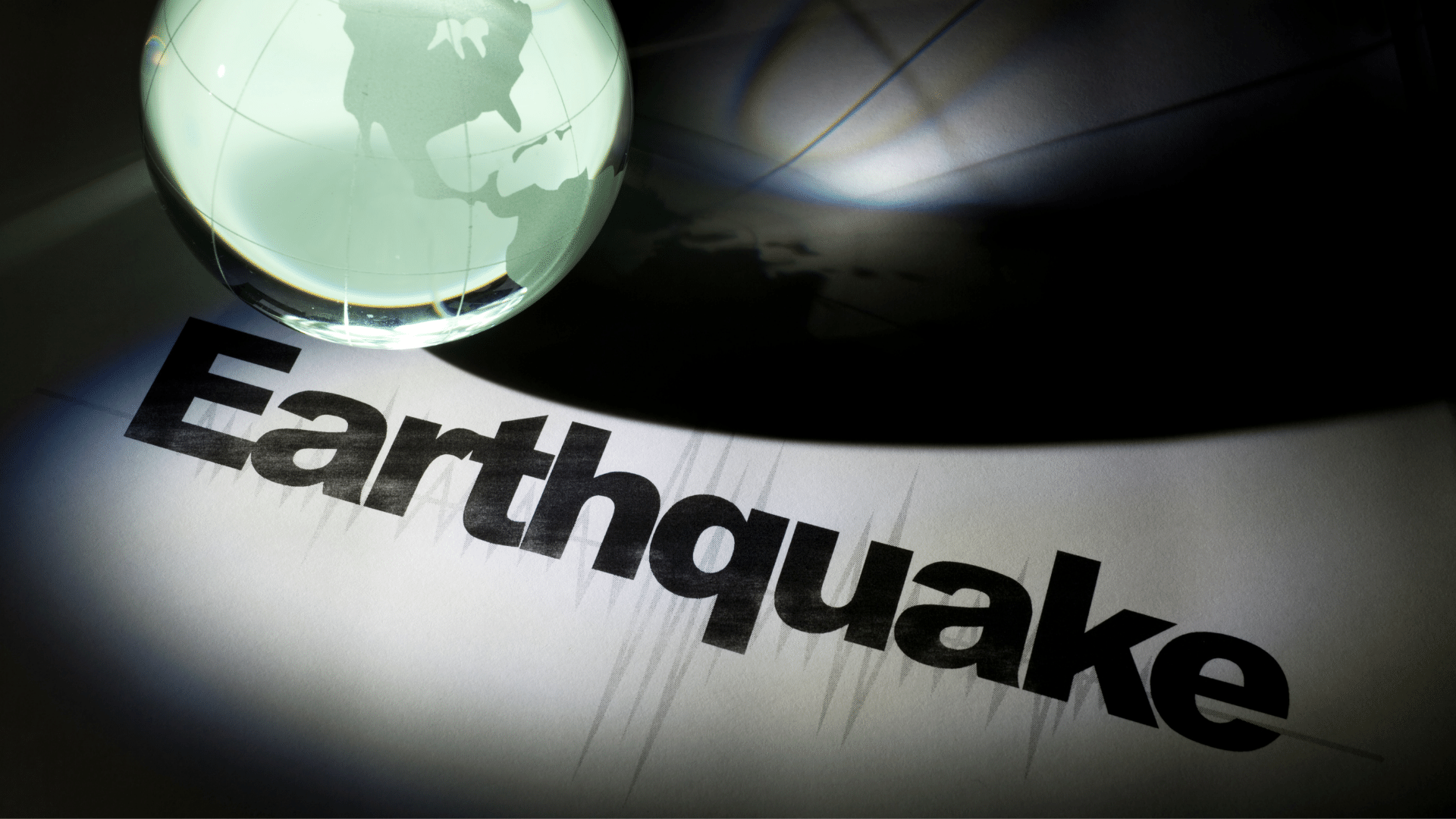The Philippines, situated in the Pacific Ring of Fire, is no stranger to major earthquakes either. The archipelago experiences thousands of seismic events each year. Among the looming concerns is the potential occurrence of "The Big One," a powerful earthquake that could have devastating consequences. While we cannot predict when it will happen, we can prepare ourselves and our communities to mitigate its impact. In this article, we will discuss essential steps on how to prepare for "The Big One" earthquake in the Philippines.
Understanding "The Big One"
The Philippine Institute of Volcanology refers to "The Big One" as the hypothetical earthquake with a magnitude of 7.2 or higher that is expected to occur along the West Valley Fault Line, which runs through Metro Manila and surrounding areas. Such an event could result in widespread damage to infrastructure and homes and pose significant risks to the safety and well-being of people.
1. Create a family emergency plan
Establish a family emergency plan that includes communication strategies and meeting points.
Ensure all family members know how to contact each other and have an out-of-town emergency contact.
Teach everyone in your family how to turn off utilities like gas, water, and electricity.
2. Build an Emergency Kit
Assemble a well-equipped emergency kit that includes non-perishable food, water, first-aid supplies, flashlights, batteries, a multi-tool, and important documents (passports, IDs, and insurance papers).
Regularly check and update the kit to ensure everything remains in working condition.
3. Home Safety Measures
Secure heavy items, such as bookshelves and appliances, to prevent them from toppling during the quake.
Bolt your home's foundation and reinforce weak points like roofs, walls, and foundations.
Ensure your home's structural integrity by consulting a professional engineer or architect for an assessment.
4. Know Your Local Evacuation Plan
Familiarize yourself with your community's evacuation plan and routes.
Identify safe shelters and make sure everyone knows how to reach them.
Participate in community drills and emergency preparedness programs.
5. Educate yourself and your family
Understand earthquake safety procedures, including "Drop, Cover, and Hold On" during the shaking.
Teach your family how to provide basic first aid and administer CPR if needed.
Learn how to turn off utilities and safely exit your home.
6. Stay Informed
Monitor local news and official sources for earthquake warnings and updates.
Install a seismic app on your phone to receive alerts.
Join community groups and participate in earthquake preparedness workshops.
7. Emergency Contacts and Medical Needs
Keep a list of emergency contacts, including local authorities, hospitals, and emergency services.
Consider the specific medical needs of family members, such as prescription medications, and ensure a sufficient supply is readily available.
8. Financial Preparedness
Maintain an emergency fund that can cover immediate expenses in the aftermath of an earthquake.
Secure important financial documents in a waterproof container.
While we cannot prevent "The Big One" from happening, we can significantly reduce its impact through preparedness. Taking the time to plan, educate yourself and your family, and be vigilant in your efforts can mean the difference between safety and catastrophe. By implementing these steps, you will not only safeguard your own well-being but also contribute to the resilience and preparedness of your community in the face of "The Big One" earthquake in the Philippines.
To mitigate the potential impact of "The Big One" earthquake, several common disaster risk management strategies should be implemented:
- Public Awareness and Education
- Launch comprehensive public awareness campaigns to educate citizens about earthquake preparedness, including school programs and community workshops.
- Conduct regular earthquake drills in schools, offices, and communities to ensure that people know how to "Drop, Cover, and Hold On" during shaking and evacuate safely.
- Building Code Compliance
- Strictly enforce and regularly update building codes and construction standards to ensure that new structures are earthquake-resistant.
- Retrofit older buildings and infrastructure to enhance their seismic resilience.
- Early Warning Systems
- Invest in an efficient early warning system that can provide alerts to the public, government agencies, and critical infrastructure operators in real-time.
- Ensure that the system is accessible, reliable, and capable of triggering automatic responses such as shutting down transportation systems and critical facilities.
- Emergency Response Plans
- Develop and maintain robust emergency response plans at the national, regional, and local levels.
- Coordinate with various stakeholders, including government agencies, non-governmental organizations, and international partners, to ensure a unified and effective response.
- Infrastructure Resilience
- Strengthen critical infrastructure such as hospitals, fire stations, and communication networks to ensure they remain operational after a major earthquake.
- Implement measures to secure utilities and transportation systems to minimize service disruptions.
- Community-Based Preparedness
- Promote community-based disaster risk reduction and management programs.
- Empower local communities to develop their emergency response plans and establish evacuation centers.
- Search and Rescue Capabilities
- Equip and train emergency response teams in urban search and rescue techniques.
- Stockpile the necessary tools, equipment, and supplies for search and rescue operations.
- Medical and humanitarian response
- Ensure that medical facilities and personnel are prepared to handle a surge in casualties.
- Develop contingency plans for the delivery of humanitarian aid and essential services in the event of widespread devastation.
- Information Dissemination
- Establish a centralized platform for disseminating information and updates during and after an earthquake.
- Use various communication channels, including social media and SMS alerts, to reach a broad audience.
- Community Participation
- Encourage active community involvement in disaster risk reduction and management initiatives.
- Foster a culture of preparedness, self-help, and mutual assistance within communities.
- Research and monitoring
- Support ongoing research and monitoring of seismic activity to improve earthquake prediction and preparedness efforts.
- Invest in earthquake-resistant building materials and construction techniques.
- Regular drills and exercises
- Conduct regular earthquake preparedness drills and exercises at the local, regional, and national levels to test response plans and identify areas for improvement.
Implementing these disaster risk management strategies is crucial for the Philippines to minimize the impact of "The Big One" earthquake and protect the lives and well-being of its citizens.
Collaboration between key government agencies here, local communities, and international organizations is essential to effectively prepare for and respond to such a significant seismic event.
Accessing critical public services in the aftermath of "The Big One" earthquake in the Philippines will be crucial for the safety and well-being of affected residents. However, the impact of such a catastrophic event can disrupt these services significantly. Here's how access to essential public services may be affected and what government continuity plans can be taken to restore them:
- Communication Services
- Impact: The earthquake can damage telecommunication infrastructure, leading to disrupted mobile, landline, and internet services.
- Restoration: Telecommunication companies should have contingency plans to quickly repair and restore damaged infrastructure. Satellite and radio communication can also be used as backup.
- Emergency Services
- Impact: Emergency services such as fire departments, police, and medical response teams may face challenges in reaching affected areas due to damaged roads and infrastructure.
- Restoration: pre-position emergency response teams and resources in strategic locations. Utilize helicopters and amphibious vehicles for rapid deployment, targeting critical road segments.
- Hospitals and Healthcare
- Impact: Hospitals and healthcare facilities may be overwhelmed with casualties, and some could be damaged or non-operational.
- Restoration: Establish field hospitals, health facilities, and medical triage centers in safe locations. Coordinate with international organizations for additional medical support if needed.
- Electricity and Power Supply
- Impact: The earthquake may damage power plants and electrical infrastructure, causing widespread power outages.
- Restoration: Prioritize restoring power to critical facilities such as hospitals and emergency services. Utility companies should have contingency plans, backup power sources, and multiple earthquake generators.
- Water and sanitation
- Impact: Water supply systems may be disrupted and sanitation facilities damaged, increasing the risk of waterborne diseases.
- Restoration: Repair damaged water infrastructure promptly. Distribute clean drinking water and set up sanitation facilities like portable toilets and handwashing stations.
- Transportation and Roads
- Impact: Roads and bridges may be damaged or blocked by debris, hindering the movement of emergency services and supplies.
- Restoration: Establish temporary access routes and prioritize clearing debris from major roads and highways. Utilize air and sea transportation for emergency deliveries.
- Shelter and Evacuation Centers
- Impact: Many people may be displaced from their homes, requiring emergency shelter and evacuation centers.
- Restoration: Identify safe and accessible evacuation centers in advance. Provide essential supplies like food, water, and blankets to those seeking shelter.
- Food Distribution
- Impact: The earthquake can disrupt food supply chains and damage food storage facilities.
- Restoration: Coordinate with government agencies, NGOs, and relief organizations to distribute food and essential supplies to affected areas.
- Information Dissemination
- Impact: Disrupted communication can hinder the dissemination of critical information and instructions.
- Restoration: Establish a centralized platform for disseminating information using various communication channels, including radio broadcasts and community loudspeakers.
- Security and Law Enforcement
- Impact: The earthquake may lead to increased security concerns, including looting and civil unrest.
- Restoration: Deploy additional law enforcement personnel and establish curfews if necessary to maintain order and security.
In the event of "The Big One" earthquake, a coordinated response involving government agencies, local authorities, humanitarian organizations, and international assistance will be essential to restoring access to critical public services as quickly as possible. Additionally, proactive disaster preparedness, community engagement, and drills can help communities better cope with and respond to such a catastrophic event.
For more information on Vista Residences, email [email protected], follow @VistaResidencesOfficial on Facebook, Twitter, Instagram, and YouTube, or call the Marketing Office at 0999 886 4262 / 0917 582 5167.










